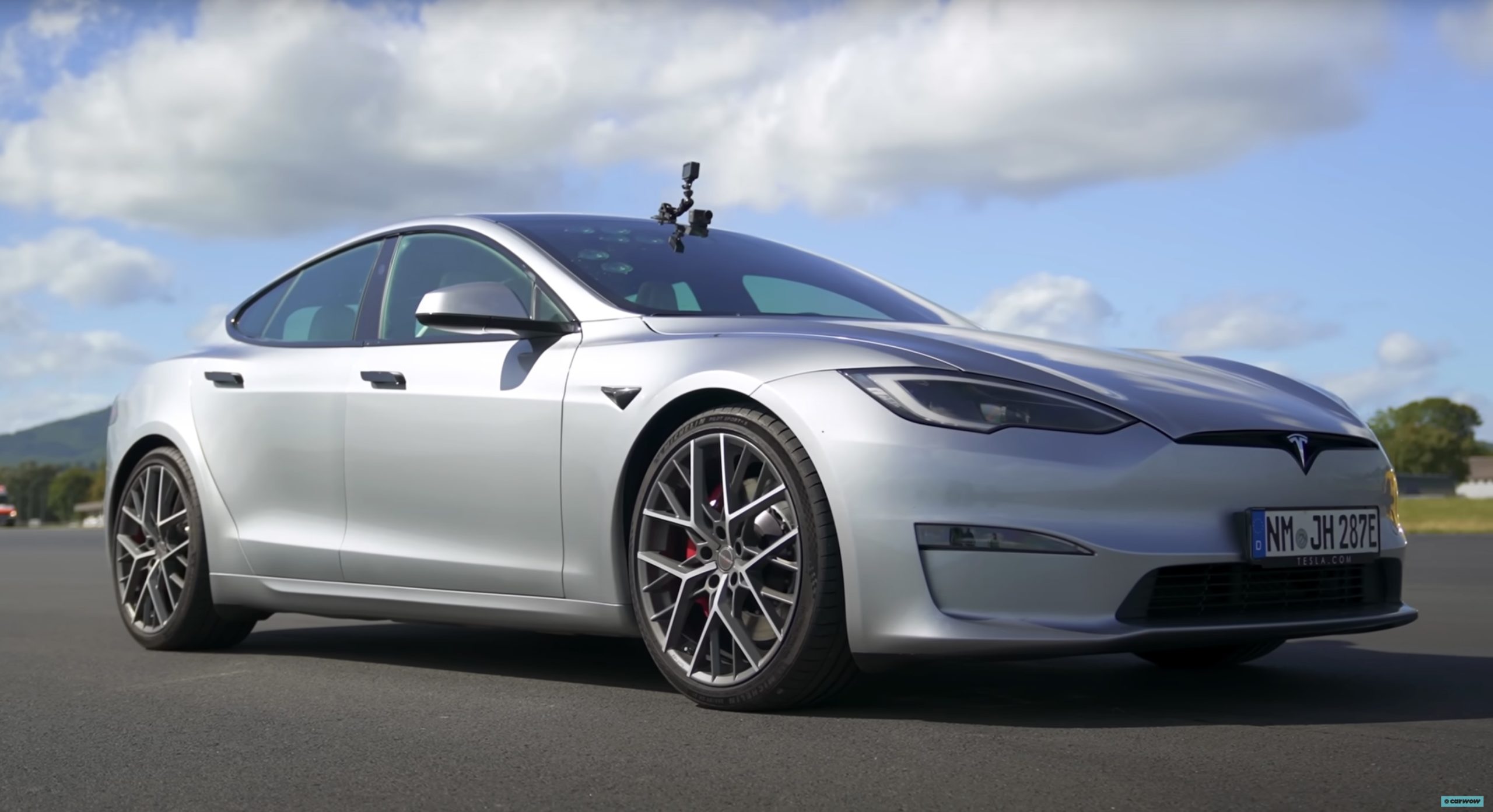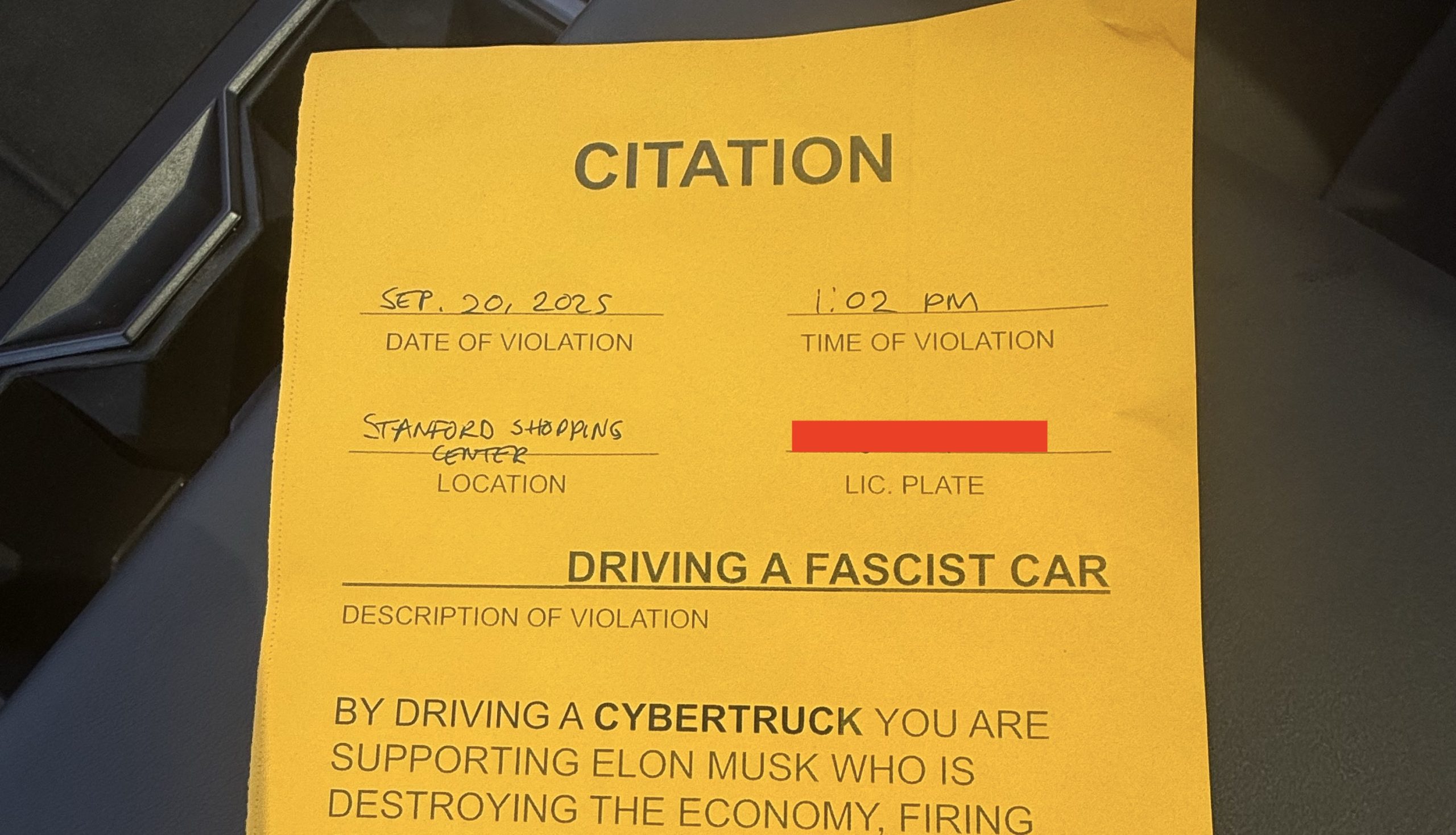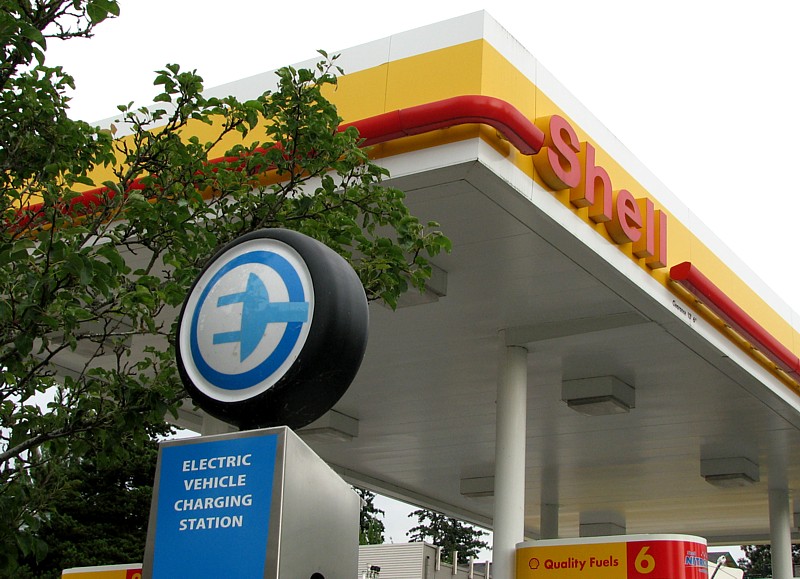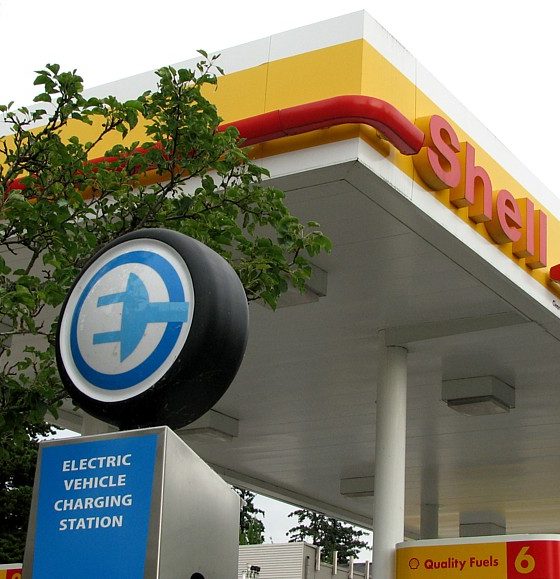If you think Big Oil is oblivious to the threat that electric vehicles pose to industry profits, think again. BP has forecast that oil demand will peak in the 2030s as EVs enter the mainstream. The CEO of Royal Dutch Shell has said the next car he purchases will be an EV, and the CEO of Total says he’s already driving one. At the recent CERAWeek conference in Houston, an annual gathering of players in the oil and gas fields, one of the hottest tickets was a seminar on batteries.
While some in the oil and auto industries still have their heads firmly ensconced in the sand (or perhaps another, more malodorous metaphorical location), others, notably the leaders of Europe-based oil conglomerates, are taking concrete steps to prepare for a future with fewer gas-burning vehicles.
Ironically, one of those moves could be investing more in “downstream” operations such as retail gas stations. Betting that oil demand will continue to grow in developing countries for some time, even as it shrinks in the wealthy world, Shell plans to expand its global network of gas stations and convenience stores, mostly in China, India, Indonesia, Russia and Mexico. According to BusinessDay, Shell and rivals such as BP see retail as a way to secure demand for the fuels they refine as overall global demand heads towards a peak.
Over the past couple of decades, the business of selling fuel to drivers has radically changed. In the US, the iconic “filling station,” where a rumpled mechanic was on hand to check your oil and fix a flat, and the culinary selection was limited to a Coke machine and bags of stale peanuts, has been replaced by a mini-supermarket, with twenty touchscreen-equipped gas pumps and 500 flavors of designer coffee.
Even as retail fuel outlets have evolved, their number has been declining for decades. A recent article in Sky News notes that since 1970, the number of stand-alone petrol stations in the UK has shrunk by 75%. In Japan, the number of EV charging points surpassed the number of gas stations in 2015.
One reason for the transformation of the retail gas business is that margins on selling fuel are razor-thin. Gas is increasingly seen as a loss leader to attract customers who will spend money on drinks and snacks. Of course, that’s exactly how EV charging is seen by many industry observers, so it makes perfect sense that some oil purveyors (again, mostly European brands so far) are installing chargers at their retail locations.
Last year, Shell began installing EV charging points at gas stations (“forecourts” to our British mates) in the Netherlands and the UK (in partnership with Dutch charging operator Allego), as well as in Norway and the Philippines. It has also acquired Dutch charging network operator NewMotion, which manages over 30,000 charging points in 25 European countries.
Above: More about the Shell Recharge program in the UK (Youtube: Shell)
BP, the dominant petrol retailer in the UK, recently acquired a stake in FreeWire, a developer of mobile rapid charging systems. Motor Fuel Group, the UK’s second-largest independent operator of forecourts, also has plans to offer fast charging.
“Downstream is helping Shell to thrive during the global shift to a lower-carbon energy system,” says John Abbott, Shell’s Director of Downstream. “We are helping to deliver tomorrow’s products, services and technologies, from battery-electric vehicle charging to next-generation biofuels, LNG for transport to hydrogen.”
Why is Europe leading the way when it comes to charging at the gas station? Demographics may be one reason: in contrast to the US, where suburban drivers charge at home, many UK drivers (perhaps up to 80%, according to research by National Grid) live in flats with no assigned parking spaces, and must park their cars on the street. This is also the case in China, and in dense urban areas around the world. If EVs are to become a viable option for all drivers, some solution to this dilemma must be found, and rapid charging at public locations could be an option.
The oil giants are also exploring some less practical strategies to meet the electric threat. Some planners at Shell seem to believe that consumers won’t feel the need to buy EVs if they can assuage their consciences by greenwashing away their carbon footprints. Canada’s Financial Post reports that Shell is starting a program that earmarks 2 cents per liter of gas towards planting trees. “This means that everybody who has a car can actually be carbon-free, said Chief Executive Ben van Beurden. “They don’t have to buy an electric car.”
Petroleum analyst Dan McTeague called this gimmick “redundant,” noting that most Canadians already pay a carbon tax that amounts to more than 2 cents per liter. “Beside the point” is another description that comes to mind. As regular readers of this column know, reducing carbon emissions is only one argument for buying an EV. The main reason electrics will replace fossil vehicles is the same reason that the oil-burners replaced horses: they represent newer technology and a superior product.
===
Note: Article originally published on evannex.com by Charles Morris

Lifestyle
Tesla Model S Plaid battles China’s 1500 hp monster Nurburgring monster, with surprising results
There is just something about Tesla’s tuning and refinement that makes raw specs seem not as game-changing.

The Tesla Model S Plaid has been around for some time. Today, it is no longer the world’s quickest four-door electric sedan, nor is it the most powerful. As per a recent video from motoring YouTube channel Carwow, however, it seems like the Model S Plaid is still more than a match for some of its newer and more powerful rivals.
The monster from China
The Xiaomi SU7 Ultra is nothing short of a monster. Just like the Model S Plaid, it features three motors. It also has 1,548 hp and 1,770 Nm of torque. It’s All Wheel Drive and weighs a hefty 2,360 kg. The vehicle, which costs just about the equivalent of £55,000, has been recorded setting an insane 7:04.957 at the Nurburgring, surpassing the previous record held by the Porsche Taycan Turbo GT.
For all intents and purposes, the Model S Plaid looked outgunned in Carwow’s test. The Model S Plaid is no slouch with its three motors that produce 1,020 hp and 1,420 Nm of torque. It’s also a bit lighter at 2,190 kg despite its larger size. However, as the Carwow host pointed out, the Model S Plaid holds a 7:25.231 record in the Nurburgring. Compared to the Xiaomi SU7 Ultra’s record, the Model S Plaid’s lap time is notably slower.
Real-world tests
As could be seen in Carwow’s drag races, however, Tesla’s tech wizardry with the Model S Plaid is still hard to beat. The two vehicles competed in nine races, and the older Model S Plaid actually beat its newer, more powerful counterpart from China several times. At one point in the race, the Xiaomi SU7 Ultra hit its power limit due to its battery’s temperature, but the Model S Plaid was still going strong.
The Model S Plaid was first teased five years ago, in September 2020 during Tesla’s Battery Day. Since then, cars like the Lucid Air Sapphire and the Xiaomi SU7 Ultra have been released, surpassing its specs. But just like the Model Y ended up being the better all-rounder compared to the BYD Sealion 7 and the MG IM6, there is just something about Tesla’s tuning and refinement that makes raw specs seem not as game-changing.
Check out Carwow’s Model S Plaid vs Xiaomi SU7 drag race video below.
Lifestyle
500-mile test proves why Tesla Model Y still humiliates rivals in Europe
On paper, the BYD Sealion 7 and MG IM6 promised standout capabilities against the Model Y.

BYD is seeing a lot of momentum in Europe, so much so that mainstream media has taken every opportunity to argue that the Chinese automaker has beaten Tesla in the region. But while BYD sales this year in Europe are rising and Tesla’s registrations remain challenged, the raw capabilities of vehicles like the Model Y are difficult to deny.
This was highlighted in a 500-mile challenge by What Car? magazine, which showed that the new Tesla Model Y is more efficient, cheaper to run, and more reliable than rivals like the BYD Sealion 7, and even the nearly 400 KW-charging MG IM6.
Range and charging promises
On paper, the BYD Sealion 7 and MG IM6 promised standout capabilities against the Model Y. The Sealion 7 had more estimated range and the IM6 promised significantly faster charging. When faced with real-world conditions, however, it was still the Model Y that proved superior.
During the 500-mile test, the BYD nearly failed to reach a charging stop, arriving with less range than its display projected, as noted in a CarUp report. MG fared better, but its charging speeds never reached its promised nearly-400 kW charging speed. Tesla’s Model Y, by comparison, managed energy calculations precisely and arrived at each stop without issue.
Tesla leads in areas that matter
Charging times from 25% to 80% showed that the MG was the fastest at 17 minutes, while Tesla and BYD were close at 28 and 29 minutes, respectively. Overall efficiency and cost told a different story, however. The Model Y consumed 19.4 kWh per 100 km, compared to 22.2 for MG and 23.9 for BYD. Over the full trip, Tesla’s charging costs totaled just £82 thanks to its supercharger network, far below BYD’s £130 and MG’s £119.
What Car? Magazine’s testers concluded that despite BYD’s rapid sales growth and the MG IM6’s seriously impressive charging speeds, Tesla remains the more compelling real-world choice. The Model Y just offers stability, efficiency, and a proven charging infrastructure through its Supercharging network. And as per the magazine’s hosts, the Model Y is even the cheapest car to own among the three that were tested.
Watch What Car? Magazine’s 500-mile test in the video below.
Lifestyle
Tesla Cybertruck slapped with world’s least intimidating ticket, and it’s pure cringe
One cannot help but cringe and feel second-hand embarrassment at the idea of a person just driving around with a stack of these babies.

A Cybertruck parked at Stanford Shopping Center in California was recently hit with what might be the most try-hard piece of paper ever slipped under a wiper blade: a “fake citation” accusing the driver of supporting a “fascist car.”
The note, shared on X by Tesla staff program manager Ryan Torres, quickly made the rounds on X, where it quickly gained attention as an example of how not to protest.
The world’s least intimidating ticket
According to the citation, the supposed “violation” was “driving a fascist car.” The remedial action? Take the bus, call an Uber, or ride a bike. The note also dubbed Elon Musk a “chainsaw-wielding Nazi billionaire.” Now, protests against Tesla and Elon Musk have become commonplace this year, but one cannot help but cringe and feel second-hand embarrassment at the idea of a person just driving around with a stack of fake anti-Tesla/Musk citations.
Torres pointed out the irony himself in his post on X. Tesla currently employs over 140,000 Americans, and SpaceX has put the U.S. firmly back at the top of space technology. As Torres put it, maybe the person behind the world’s least intimidating ticket should “read a book on innovation before vandalizing” other people’s property.
Peak performative clownery
Not to mention that the fake ticket’s logic collapses under its own weight. EVs like the Cybertruck are literally designed to reduce emissions, not “destroy the economy.” If anything, Tesla has bolstered the United States’ economy by fueling jobs in engineering, manufacturing, and clean energy. It’s not the first time a Tesla has been the target of vandalism or politically charged notes, but this one stands out for sheer cringe value.
Torres summed it up neatly: “Peak clownery.” On that point, at least, the citation earns full marks. In a way, though, perhaps cringe fake tickets are not as bad as the literal firebombs that were being thrown at Tesla stores and cars earlier this year because some critics were gleefully misinformed about Elon Musk.










